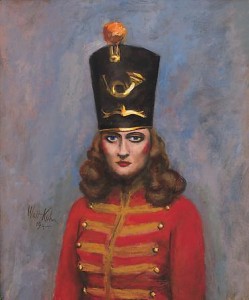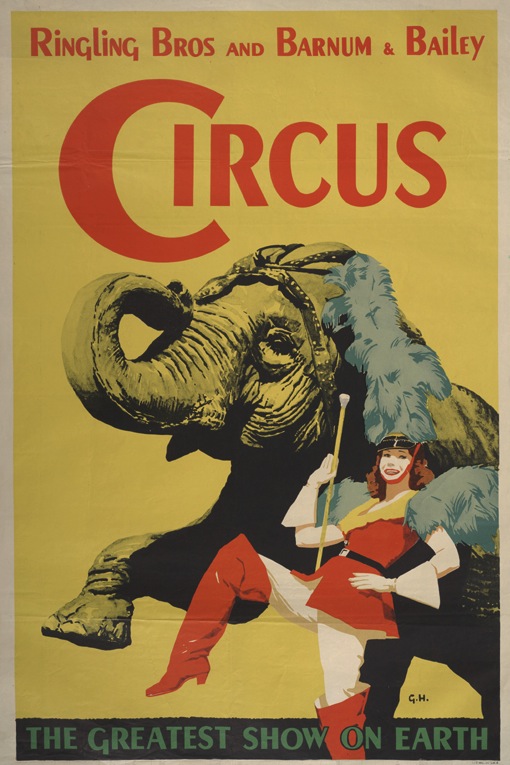Walt Kuhn (1877-1949) was a painter perhaps best remembered for organizing the Armory Show of 1913, which introduced avant-garde European art to the American public. Kuhn was also a lover of the circus and the theatre and in the 1920s began to somewhat obsessively paint portraits of circus performers and showgirls. He was eventually institutionalized in the late 1940s, but produced a truly stunning body of work, a sampling of which is now on display at the DC Moore gallery. The exhibition, Walt Kuhn: American Modern, runs through March 16 and the assorted works powerfully demonstrate his simple and affective style. I was of course particularly interested in Kuhn’s circus work and among the paintings are a few wonderful portraits of circus “girls,” as they were known in contemporary show business parlance. Among this group is one simply known as “Woman in a Majorette Costume,” from 1944.

The sitter is not identified, but it might actually be Katherine “Kitty” Clark, who joined the Ringling Bros. and Barnum & Bailey Circus in 1938, and served as a majorette for the circus through the 1940s. Clark was a skillful performer who at different times appeared in equestrian, aerial, and animal acts. She was also a renowned beauty and frequently appeared in the show’s advertising. Below is a 1941 poster produced by the studio of Norman Bel Geddes that was used by the circus throughout the decade with minor variations. It was actually designed by George Howe (you can see his initials between the elephant’s hind legs), who worked with Geddes, and shows Clark kicking up in her majorette uniform. Whether or not she was the model for this particular painting is of course questionable, but she certainly bears a passing resemblance to the woman.

Whatever the case, I highly recommend the exhibition. The Armory Show has unfortunately overshadowed Kuhn’s career as an artist, but hopefully this exhibition will give him increased recognition as a modernist American painter of real import.
